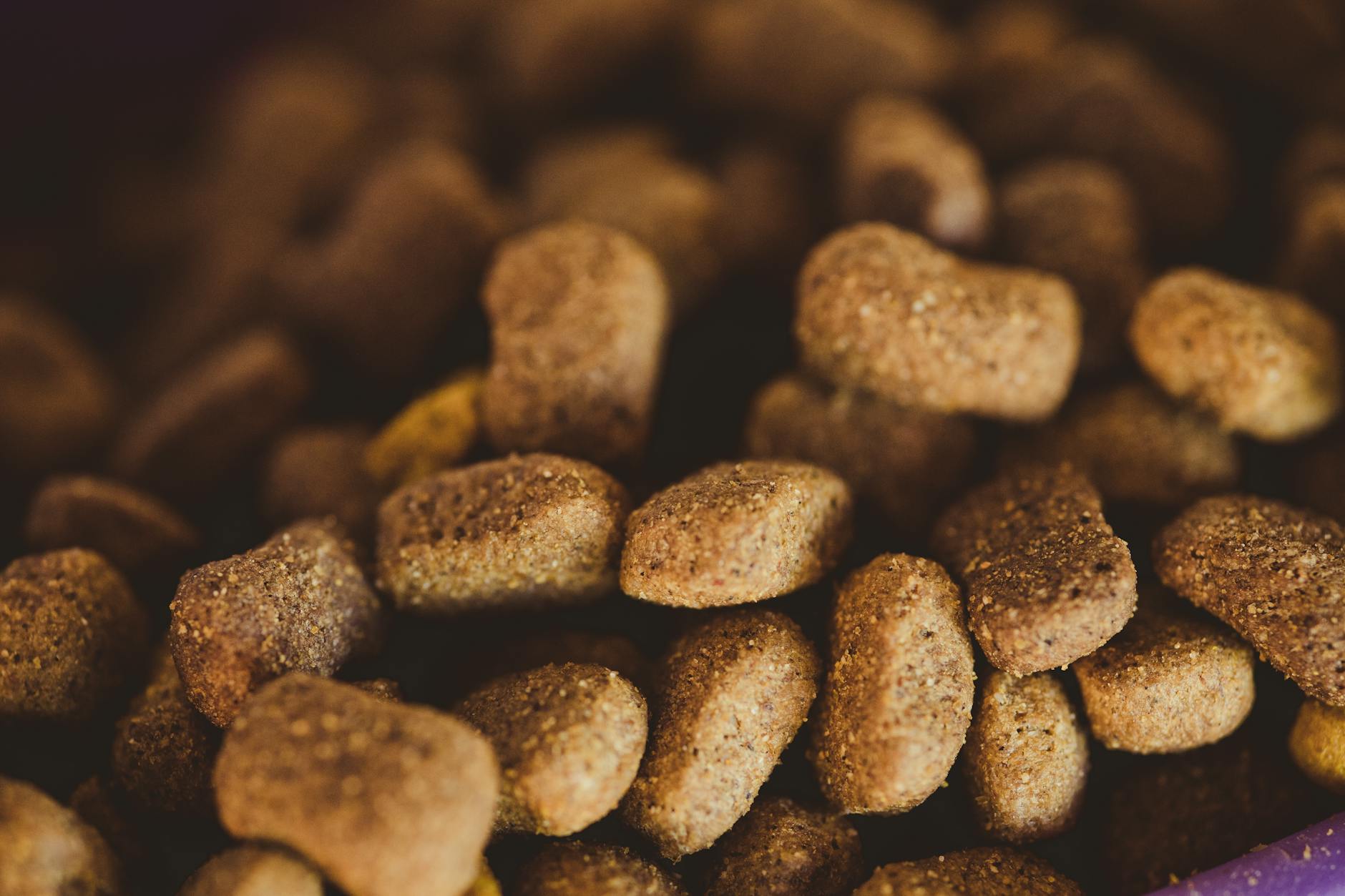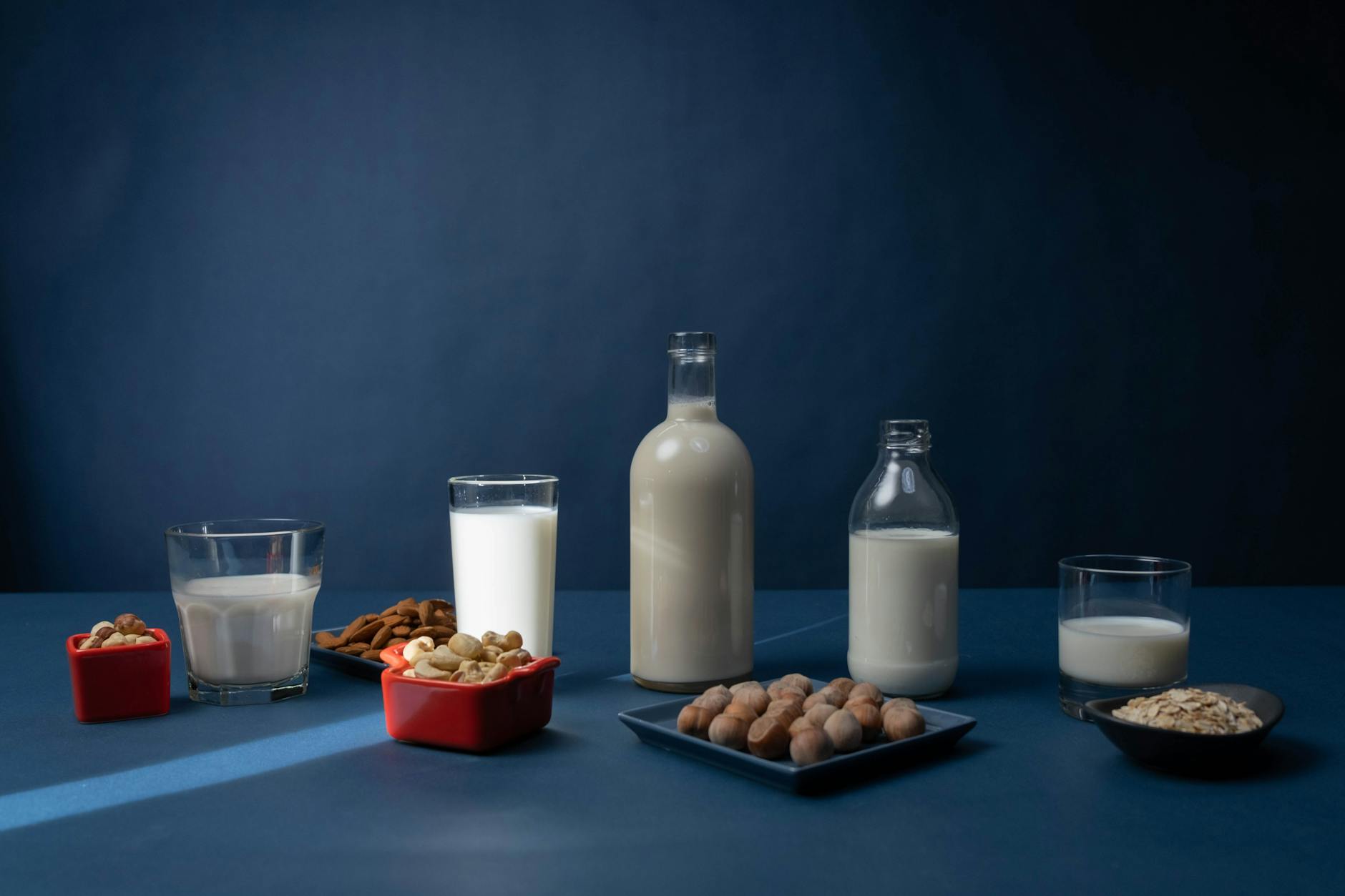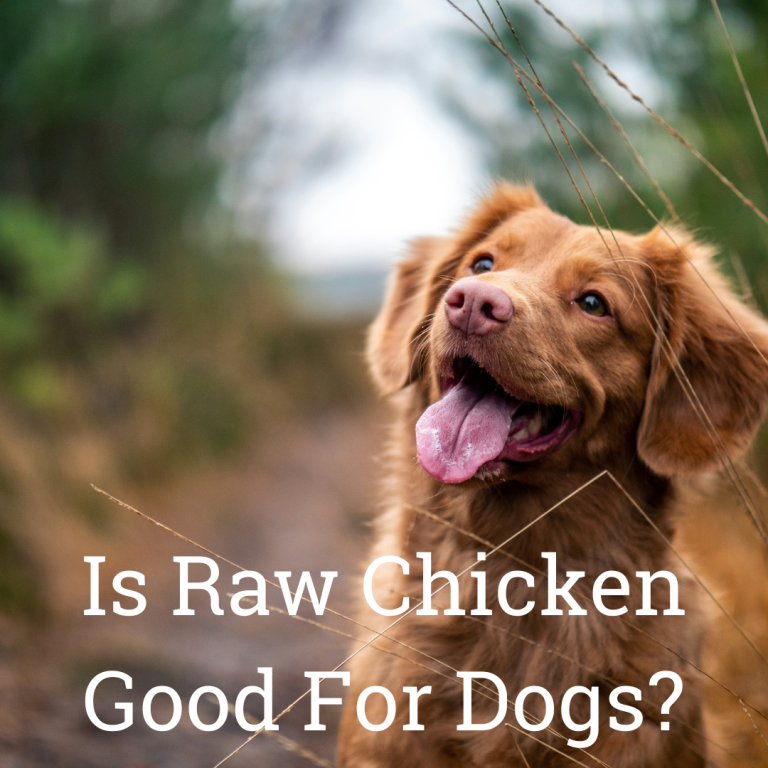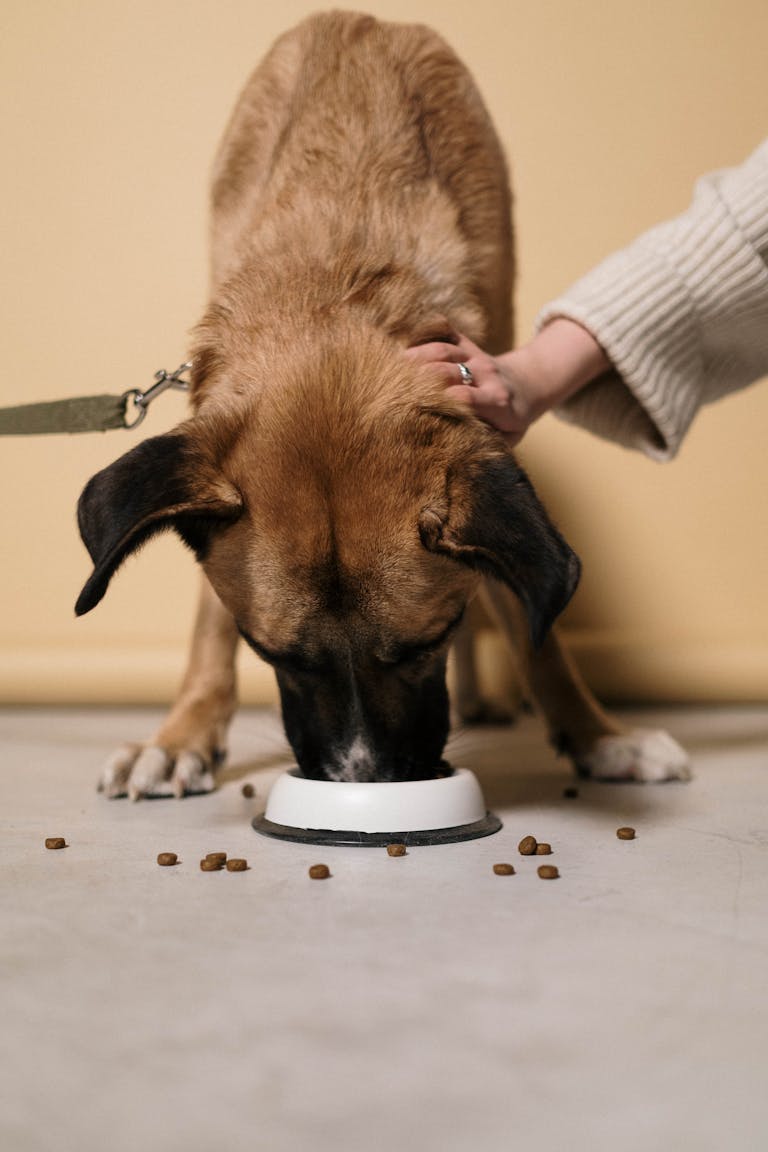The Pros and Cons of Grain-Free Diets for Dogs

The Pros and Cons of Grain-Free Diets for Dogs. Grain-free diets for dogs have become a hot topic among pet owners.
While some champion these diets for potential benefits like aiding sensitive stomachs or allergies, others raise concerns about possible risks, including links to heart conditions like DCM (dilated cardiomyopathy).
With so much conflicting information, it’s essential to understand both the benefits and drawbacks to see if it’s the right choice for your dog. Grain-free options might be helpful for dogs with specific needs, such as allergies, as discussed in Best Grain-Free Dog Food Choices for Akitas 2025.
But are these diets suitable or necessary for every pup? Let’s break it down.
Table of Contents
What Is a Grain-Free Diet?
A grain-free diet for dogs excludes ingredients like wheat, corn, rice, and oats. Instead, alternative carbohydrate sources provide essential nutrients without relying on grains. This diet has gained traction among pet owners looking for options tailored to specific dietary needs, such as allergies or sensitivities.
But how does it differ from regular dog food, and what exactly goes into grain-free options?
Common Ingredients in Grain-Free Dog Foods
Grain-free dog foods typically use alternative carbohydrate sources to replace traditional grains. These ingredients are chosen not only for their nutritional value but also for their lower likelihood of triggering food sensitivities or allergies. Here’s what you’ll commonly find:
- Legumes (e.g., peas, lentils, chickpeas): Rich in protein, fiber, and essential minerals.
- Sweet Potatoes: Sweet potatoes are high in fiber and vitamins like A and C, offering energy without spikes in blood sugar.
- Potatoes: A straightforward starch source, providing quick energy for active dogs.
- Quinoa: A pseudo-grain loaded with protein, iron, and amino acids, supporting overall health.
- Pumpkin: Known for aiding digestion and being a source of essential minerals.
- Meat-Based Proteins (e.g., chicken, fish, beef): Grain-free options often emphasize high-quality proteins for muscle maintenance and energy.
Many grain-free dog foods focus on providing balanced nutrition by combining these ingredients with essential vitamins, minerals, and omega fatty acids. However, it’s vital to note that not every ingredient works for every dog. Some may have sensitivities to legumes or root vegetables, so knowing your dog’s needs is key. For more details, check out Best Dog Food For Australian Shepherds, which highlights specific grain-free options.
How Grain-Free Foods Differ from Regular Dog Foods
The primary distinction between grain-free and regular dog food lies in the carbohydrate sources and overall ingredient profile.
- Carbohydrate Sources:
Regular dog foods rely on grains like wheat, corn, and rice for energy, while grain-free diets substitute these with legumes, potatoes, or other alternatives. This swap caters to dogs with grain allergies or intolerances. Are grains bad for all dogs? Not necessarily. Whole grains like oats and brown rice are rich in nutrients that benefit many dogs, as highlighted in Should I Feed My Dog Grain-Free Diet? Meat Content:
Grain-free recipes often feature higher meat content to balance the absence of grains. This can provide a higher protein profile, which many active and working dogs thrive on.- Digestibility:
Some owners perceive grain-free diets as more manageableon the stomach. Ingredients like sweet potatoes and pumpkin are gentle for pups with digestive issues and can help maintain a healthy gut.
Cost:
Grain-free options are generally more expensive than their regular counterparts due to the alternative ingredients and higher protein focus.
It’s also worth noting that while some dogs benefit significantly from grain-free food, it’s not necessary for all pups. The AKC Guide on Grain-Free Diets covers key considerations for those wondering whether grain-free is essential.
Understanding these distinctions can help pet owners make informed decisions based on their dog’s unique dietary needs and overall health. Always consult your veterinarian to choose the most appropriate diet for your furry friend.
The Benefits of Grain-Free Diets for Dogs
Grain-free diets are more than a trend—they offer tailored solutions for many dogs with specific health and dietary needs. While these diets may not suit every dog, they shine in particular scenarios. Here are some key benefits.
Improved Digestion
For dogs with grain sensitivities or food intolerances, digestion can struggle, leading to symptoms like bloating, diarrhea, or vomiting. Switching to a grain-free diet can alleviate these issues for many pups, as it avoids common irritants like wheat, corn, and soy.
Key ingredients in grain-free dog foods, such as sweet potatoes or pumpkin, provide easily digestible carbohydrates that reduce stress on the stomach. Imagine replacing a heavy meal that leaves you feeling sluggish with something lighter and more nourishing—that’s what this switch can mean for your dog. If digestive sensitivity is your concern, it’s worth exploring grain-free options that simplify mealtime for your furry friend.
Photo by Rafael Rodrigues:
Reduced Allergic Reactions
Did you know grains are a common allergen for dogs? These allergies can manifest in itchy skin, redness, or incessant scratching that frustrates you and your dog. Grain-free diets lower the risk of these reactions by removing potential allergens from the equation.
Instead of grains, these foods incorporate other nutrient-dense ingredients, reducing the load of problematic fillers. If your dog has been struggling with unresolved skin or coat issues, switching to grain-free could be the answer your vet recommends. This nutritional adjustment often works wonders for smaller breeds with sensitive systems, as explained in Small Breeds – Dog Nutrition Guides.
Higher Protein Content
Active and sporting dogs require more protein to sustain their energy and muscle mass. Grain-free diets often excel by emphasizing high-quality protein sources like chicken, beef, or fish. These ingredients compensate for the lack of grain and deliver essential amino acids that keep your dog strong and active.
For sporting and working breeds, grain-free foods can be a game-changer. Picture a marathon runner fueled by protein-packed meals—this is the equivalent for your energetic dog. If your pup is always on the go, consider exploring diets designed for sporting breeds, such as those detailed in Best Dog Food for Sporting Breeds.
Weight Management and Energy Levels
Grain-free diets also offer a unique advantage in managing weight and maintaining steady energy. These diets rely on ingredients like sweet potatoes or legumes that provide slow-releasing energy, avoiding the peaks and crashes caused by grain-heavy meals.
Additionally, many dogs prone to weight gain—such as smaller breeds—benefit from the lower carbohydrate content and higher quality ingredients in grain-free options. By keeping portions balanced and incorporating exercise, these foods can make weight control simpler for both pup and owner. Interested in how this works for smaller breeds? Check out Best Grain-Free Dog Foods For Small Breeds 2024.
Grain-free diets can be a practical choice for specific dogs, especially those needing digestion, allergies, and energy support. While they aren’t for every pup, understanding their benefits can help you decide what’s best for your furry friend.
The Drawbacks of Grain-Free Diets for Dogs
While grain-free diets have gained popularity for their potential benefits, they are not without their downsides. These dietary adjustments can lead to unexpected challenges or risks for some dogs.
Potential Link to Heart Disease
Grain-free diets have faced increasing scrutiny due to a potential connection with canine dilated cardiomyopathy (DCM), a serious heart condition. DCM affects the heart’s ability to pump blood, and it has been linked to diets heavy on ingredients like legumes, lentils, or potatoes. The U.S. Food and Drug Administration (FDA) has been investigating these claims, raising concerns nationwide.
A study highlighted in the FDA Grain-Free Diet Alert indicates that dogs consuming grain-free food may have an increased risk of developing DCM. Although the exact cause remains unclear, grain replacements like peas and lentils are under scrutiny. It’s worth noting that this risk may not affect all dogs but still poses an essential consideration for pet owners. If your dog is a large breed or has a predisposed condition, paying close attention to their diet is necessary.
For a deeper understanding of grain-free options and what to watch out for, visit Understanding Dog Food Labels.
Higher Costs
Grain-free foods often come with a premium price tag. Why? These diets rely on alternative ingredients like sweet potatoes, quinoa, and chickpeas, which are generally more expensive than traditional grains like corn or rice. Additionally, many grain-free formulations include higher concentrations of quality meats, increasing the overall cost.
On average, you might spend 30% to 50% more on grain-free options than regular dog food. While the added cost is justified for dogs with allergies or sensitivities, it might not be the best choice for all pet owners.
If your dog can tolerate grains, a well-balanced diet with high-quality grains could offer similar benefits at a lower cost. Explore Best Dog Food for Sensitive Stomachs for budget-friendly alternatives prioritizing your dog’s health.
Not Suitable for Every Dog
Despite their popularity, grain-free diets aren’t necessary or suitable for every dog. For pups without diagnosed grain allergies or intolerances, switching to grain-free can eliminate nutrients in whole grains, such as fiber, vitamins, and minerals.
This might not be a significant issue for active or athletic dogs due to their high protein requirements. However, cutting out grains could lead to nutritional imbalances or excess weight gain for less active dogs or those in later life stages. Older, sedentary dogs might consume more calories from high-protein alternatives, leading to obesity.
If your dog thrives on their current diet and has no grain sensitivities, there’s no reason to make a change. Consider reading Feeding Large Breed Dogs: Nutrition Tips for more insight into diet customization.
While beneficial for some, grain-free diets come with their own challenges. Always consult your veterinarian to decide the best option for your dog’s needs.
Photo by MART PRODUCTION:
Factors to Consider Before Switching to a Grain-Free Diet
Choosing the proper diet for your dog is no small decision. Your furry friend’s health, activity level, and overall well-being depend on the nutrients you provide. Grain-free diets might sound appealing, especially with the increasing focus on food sensitivities and allergies. However, not every dog benefits from grain-free meals, and making a switch without proper consideration can lead to unintended consequences. Below are some critical factors to weigh before leaping.
Consulting with a Veterinarian
Before making significant dietary changes, your first step should involve conversing with your vet. Why? Because no two dogs are alike, feeding your dog the wrong diet could cause more harm than good. A veterinarian will assess your dog’s overall health, weight, and potential allergies to determine if a grain-free diet is correct.
For example, some vets may advise against grain-free foods if your dog has a history of heart issues like dilated cardiomyopathy (DCM). Others may find it beneficial for pups showing grain sensitivities, such as itchy skin or digestive upsets. Either way, play it safe—your vet is your co-pilot on your pet’s health journey. For additional insights into balanced diets and proactive pet care, visit Nutrition Tips at K9 Nutripick.
Understanding Your Dog’s Specific Needs
It’s essential to examine what your dog may require in its diet closely. Is your dog highly active? A senior who’s slowing down? Or perhaps a breed known for sensitivities? Age, activity level, size, and breed characteristics should all influence your dietary choices. A one-size-fits-all approach doesn’t work when it comes to dog food.
For instance:
- Puppies need nutrient-rich foods to support growth.
- Active breeds may thrive on grain-free diets with high protein content, while less active or older dogs could risk weight gain from the same diet.
Please take a moment to list your dog’s needs and match them with ingredients that complement those needs. To learn more about tailoring nutrition for specific dog breeds, see Dog Nutrition Tips for All Breeds.
Reading Labels Carefully
Not all grain-free products are created equal. The words “grain-free” on the packaging don’t automatically mean “high quality.” Unfortunately, some brands replace grains with fillers like excessive amounts of peas, lentils, or potatoes—ingredients that may lack balanced nutrition or have been linked to health concerns like heart disease.
When reviewing labels, focus on these points:
- Protein First: Look for foods where real meat is listed as the top ingredient.
- Avoid Fillers: Avoid overly processed ingredients that add calories but have no substantial nutrient value.
- Supplemental Additives: High-quality grain-free diets often include vitamins, omega fatty acids, and prebiotics for digestion.
Reading and interpreting labels might feel overwhelming, but it’s worth putting in the effort. If you’re unsure what specific ingredients to avoid or prioritize, the article Understanding Dog Food Labels is an excellent start for pet owners.
Switching to a grain-free diet isn’t just a dietary shift—it’s a decision that can impact your dog’s overall health and longevity. Keeping these factors in mind ensures that any changes you make are informed and beneficial.
Alternatives to Grain-Free Diets for Dogs
While grain-free diets may seem the ultimate solution for dogs with allergies or sensitivities, they’re not the only option. For those seeking alternatives, plenty of practical and nutritionally balanced choices address common dietary concerns without eliminating grains. Below, we’ll explore two substantial options: limited-ingredient diets and homemade dog food.
Limited Ingredient Diets

Photo by cottonbro studio
Limited ingredient diets (LID) target dogs with food sensitivities or allergies while still including grains. These diets simplify ingredient lists, reducing the potential for allergens and fillers that can cause adverse reactions. Unlike grain-free options, LIDs incorporate whole grains like rice or oats, which can be easier for some dogs to digest.
Key benefits of limited ingredient diets:
- They focus on one primary protein source (e.g., lamb or turkey).
- Include gentle carbohydrates, such as oatmeal or brown rice.
- Avoid fillers and preservatives often found in commercial dog foods.
These diets often work for dogs with sensitive stomachs or itchy skin, aggravated by more complex ingredient profiles. If you’re considering this route, browse options like those featured in Top Dog Foods In 2024 to find LID-based foods tailored to specific breeds or needs.
Homemade Dog Food
Preparing homemade dog food gives you complete control over your dog’s nutrition. You can choose wholesome ingredients, including grains like oats or barley, to create balanced meals that suit your dog’s dietary needs. However, homemade meals require attention to detail and basic canine nutrition knowledge.
Here’s how to get started:
- Plan a Balanced Diet: Include proportions of protein (like chicken or turkey), carbohydrates (e.g., rice or sweet potato), and vegetables (e.g., carrots or peas).
- Consult Your Vet: Ensure the recipe meets your dog’s specific nutritional requirements.
- Incorporate Supplements: Add essential vitamins and minerals to prevent deficiencies.
Safety tips to keep in mind:
- Avoid toxic foods like onions, garlic, and chocolate.
- Use clean, fresh ingredients.
- Prepare small batches to maintain freshness and reduce spoilage.
Looking for inspiration? Visit Dog Cake Recipe: Easy and Healthy Homemade Treats for safe and easy ideas to spoil your pup occasionally.
Homemade meals may seem time-consuming, but they’re an excellent choice for pet owners seeking higher-quality, grain-inclusive diets. Explore resources like 5 Dry Dog Food Alternatives to Grain-Free for additional inspiration and tips, which highlight creative and balanced approaches.
FAQ About Grain-Free Diets for Dogs
Grain-free dog diets come with plenty of questions from concerned pet owners. Whether you’re wondering about nutritional content or potential risks, it’s crucial to have clear answers. Below are frequently asked questions (FAQ) to help you better understand grain-free diets and decide if they’re right for your dog.
Are Grain-Free Diets Suitable for All Dogs?
No, not every dog benefits from a grain-free diet. These diets are generally tailored toward pets with grain allergies or sensitivities. Dogs without diagnosed issues often thrive on a balanced diet, including grains like rice, oats, or barley. Always consult your veterinarian to determine if grain-free is right for your dog. For more insights, check out Should I Feed My Dog Grain-Free Diet?
Are Grain-Free Foods Linked to Heart Disease?
A point of concern with grain-free diets is the potential connection to Dilated Cardiomyopathy (DCM), a serious heart condition. Several grain-free dog foods rely on legumes, potatoes, or lentils as substitutes, which may play a role in DCM development, though more research is needed. For additional details, explore the FDA Grain-Free Diet Alert.
How Can I Tell If My Dog Needs a Grain-Free Diet?
Dogs with frequent itching, digestive upset, or chronic ear infections might benefit from switching to grain-free. However, these symptoms can also be linked to other food allergies. Before changing, observe your pet’s behavior and consult your vet for guidance. Learn more about identifying food sensitivities in pets by visiting Grain-Free Diet FAQs.
Are There Alternatives to Grain-Free Diets for Dogs with Allergies?
If grains are an issue, you can explore limited-ingredient diets (LIDs). These diets are designed to reduce allergens without completely removing grains. They feature simple ingredient lists with single protein sources and gentle carbohydrates like brown rice or oats. If you’re not ready for grain-free options, LIDs could be a perfect solution. Check out Dog Breed Guide: Find Your Perfect Companion for more tailored recommendations.
Does Grain-Free Mean More Protein?
Not always. While many grain-free diets rely on higher-quality protein sources, the absence of grains doesn’t guarantee higher protein content. Be sure to read labels carefully. Look for dog foods that list real meat as the main ingredient, and avoid fillers.
Are Grain-Free Diets More Expensive?
Generally, yes. Grain-free dog foods often use alternative carbohydrates like sweet potatoes and high-quality proteins, which can be costlier. However, the added expense may be worth it for dogs with specific needs. If cost is a concern, consider discussing balanced alternatives that fit your budget with your vet.
Grain-free diets for dogs raise numerous questions, and understanding the pros and cons can help you make educated decisions. Knowing the facts about allergies, digestion, or energy needs is crucial for your pet’s health. Keep exploring to find the best options for your furry companion.
Conclusion
Grain-free diets have advantages, such as reduced allergen exposure and potential digestive benefits. However, they aren’t a universal fix and may pose risks for some dogs. Going grain-free should always align with your dog’s unique health profile and nutritional needs.
Grain-inclusive diets often offer a balanced and cost-effective alternative for dogs without grain sensitivities. Always consult a veterinarian to ensure any dietary changes support your pet’s well-being.
Are you curious about broader dog nutrition options? Discover insights on tailored feeding strategies in Best Dog Food For Belgian Malinois or explore Dog Nutrition Guidelines for expert tips.






